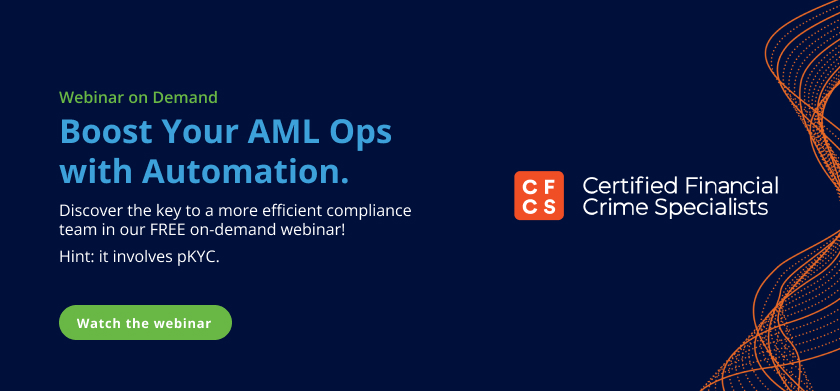
We’re on a mission to help banks and financial institutions shield their customers from fraud and financial crime, all while making them more efficient, effective, and productive. That’s why we recommend that our clients host their risk management on Feedzai’s cloud environment, Feedzai-as-a-Service (FaaS) platform. It’s the most scalable, secure, and flexible way to reach their goals.
In “Feedzai Fraud Frontlines,” we’ll walk you through a technical challenge, what we tried, what we learned, and what comes next. Come with us as we migrate a client from their own self-managed cloud environment to Feedzai-as-a-Service.
Preventing Digital Wallet Transaction Fraud in Latin America
Our client is a digital wallet provider based in Latin America. As pioneers in the industry, their innovative solutions swiftly gained traction, offering users lightning-fast transactions and bringing vital financial services to underbanked populations. But with great popularity comes great responsibility – the job of fending off fraudsters.
Fraudsters quickly exploited our client’s success, using impersonation fraud and social engineering to commit authorized push payment (APP) scams. That’s where our partnership began. Feedzai deployed our powerful Pulse and Transaction Fraud technology to help the client fight back against fraud.
The firm was quick to learn that there’s a price for popularity. As experienced fraud fighters, we understand all too well that any technological advancement that combines speed and money will inevitably see fraudsters among its earlier adopters. And that’s just what happened. Feedzai stepped in to provide more than just fraud prevention solutions. We also put the client on a path to additional growth by helping them shift to our cloud environment.
Feedzai collaborated with our client with help on three key issues: minimizing fraud, migrating from the client-owned cloud infrastructure to Feedzai’s software-as-a-service, and protecting new use cases from fraud as they emerged from the additional business lines that came with the client business growth. Here’s how each step of the journey unfolded.
Problem 1: How to Address Rampant Transfer Fraud
First, the firm faced an issue with transaction fraud. Bad actors were committing impersonation fraud to convince victims to send them money under false pretenses, often using social engineering. Using these tricks, fraudsters convinced victims to transfer money using authorized push payment (APP) scams. Fraud became an issue across several of the firm’s business lines, including P2P transfers, eCommerce payments, bill payments, digital goods, and more.
Imagine spending years building up a reputation for speed and convenience. You’ve probably done so yourself. The last thing you want is to see your efforts undone by fraud.
This is where our partnership first started. We started by installing our Pulse solution to support the client’s rules and metrics. We also recently launched our Transaction Fraud platform, which we installed later. Our data science team helped the firm establish rules and metrics according to each different business line. With the implementation of Feedzai’s Transaction Fraud platform, the firm saw a decline in APP fraud across different use cases.
Problem 2: Client Needed to Upgrade its Cloud Setup
But addressing the client’s fraud challenges was just the beginning. After experiencing rapid growth, the firm wanted to shift from its existing self-managed cloud environment to the Feedzai-as-a-Service cloud environment. The client wanted to focus on its growth, after all, not fraud prevention.
There were several reasons the firm decided to make this shift. At this stage of the relationship, Feedzai had full access to their log files and was capable of delivering a strong performance when support tickets were filed. At the same time, the access we had internally with the firm made it easy for us to make system improvements without depending on the client’s infrastructure team for intervention.
The shift from their own cloud infrastructure to Feedzai-as-a-Service also provided significant financial relief for the client. The firm no longer had to absorb the costs and expenses of maintaining a cloud environment on their side. Plus, they could quickly enjoy features that were exclusively available to Feedzai customers through our cloud service.
The client’s desire to shift to Feedzai-as-a-Service was driven by ongoing infrastructure issues with its self-managed cloud environment. These caused delays and extra effort for the client’s team of experts to maintain it. For example, when the client opened a support ticket, it could take hours or even days to collect all the necessary log files. In other words, it required a lot of unnecessary additional work for the client to resolve simple issues with their existing arrangement.
The client realized these struggles to resolve basic issues presented a significant obstacle to its growth plans. They realized it was better to partner with someone who was willing to manage a cloud environment on their behalf while the organization focused on its growth plans.
Problem 3. Cloud Migration Challenges for Both Sides
The client eventually reached the decision to migrate from its self-managed cloud to Feedzai-as-a-Service. The decision was a significant milestone for each party. For the client, it was a moment in their growth as a company to take on new challenges. For Feedzai, it was the first time to help a client upgrade to the cloud.
But as history can attest, the journey to be the first at anything rarely goes smoothly. As with other first-time journeys, there were stumbles along the way.
The most notable stumble occurred during the migration process. The client’s business expanded rapidly after the migration kicked off, and it decided to add new business lines to its portfolio. This caused delays in the migration process, which was already underway at this point. If customers from these business lines were not factored into the cloud environment’s design, the rules and metrics would not have worked as intended.
As a result, we had to slow down the migration process to accommodate these new cases. During this time, we analyzed how the client’s expansion goals impacted our initial migration plan as well as Feedzai’s cloud infrastructure and dimensioning. After a few months, we were able to recalibrate the plan accordingly and resume the migration.
How to Make Cloud Migration Go Smoothly
When being the first at anything, it’s important to understand that things are unlikely to go as initially planned. Feedzai’s first cloud migration case was no exception. Here are the key lessons we learned from our initial cloud migration experience.
- Practice clear, open communication: Communication should start with clarifying the goals and hierarchies for both sides. Set clear expectations of who is responsible for which tasks and how each party will communicate developments with each other. Establishing who is responsible for specific tasks will offset any potential disruptions.
- Outline the full scope of the project: Just as importantly, it’s important for both sides to understand the change process and how the new process will alter existing processes. It was important for our client to outline its business priorities so we could factor them into our cloud migration plans. Communicating these critical details will help clients understand the change process and how to make change requests if additional scope is introduced. It’s important to have a clear understanding of how many business use cases the migration process will cover – both now and in the future – in order to complete work in a timely fashion.
- Loop in all relevant stakeholders: It was also important to have all major stakeholders involved in big decisions. Keeping managers, vice presidents, and C-suite level leadership in the loop will keep them aware of how the project is unfolding. The stakeholders, after all, are the people who must sign off on projects and will understand their organization’s priorities and who must understand a project’s risks. Having them constantly looped in will make it easier to address any unexpected challenges that arise and alleviate the need to escalate things if there are serious issues or disagreements over how to proceed.
As with any first-time journey, there are lessons we can learn and incorporate into future projects. The key lesson we can learn from our voyage cloud migration experience is to communicate effectively with all parties and to ensure everything is lined up before a major undertaking like cloud migration gets started.
Share this article:
Related Posts
0 Comments11 Minutes
#MyAI: Customer Choice and Consent in the Generative AI Age
From chatbots to call centers to loan applications and beyond, artificial intelligence…
0 Comments6 Minutes
How Feedzai Supports Mental Health / Menstruation at Work
At Feedzai, we have a reputation for being risk-takers and innovators. In our product, in…
0 Comments7 Minutes
How Banks Can Upgrade Their Legacy Banking Systems
Many banks have had their current rules-based legacy banking systems in place for up to…




